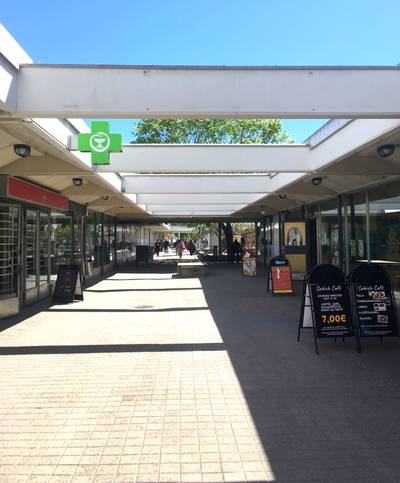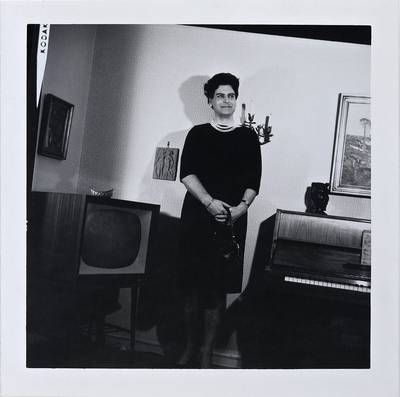

A midnight swim to the sounds of Derek Jarman’s Blue on Vifarnaholme, 2021. Photo: Martha Jager.
Mourning School is an artistic study program on the notion of being in grief as the stuff of our everyday, initiated by Lucie Gottlieb and Rosa Paardenkooper. In a series of exhibitions, public programming and publications, we imagine new ways of collective mourning to give name to and make space for the feelings that come with death, dying, loss and mourning.
Platform for the epistolary form Dear, is an Amsterdam based initiative by artist Martha Jager, which initially emerged to bridge a time marked by distance, encircle the enforced slowness of everyday life and contrast the acceleration of online production, during the COVID-19 pandemic. Adopting the intimate practice of writing letters as a form of publishing, Dear, invites artists, writers and poets to compose a letter which is distributed by post to readers worldwide.
In August 2021 Mourning School (Rosa Paardenkooper, Lucie Gottlieb), a long-term curatorial study program based in Stockholm and Dear, (Martha Jager) an Amsterdam-based artist initiative, gathered on Vifarnaholme, an island in Lake Malaren, near the city centre of Stockholm. During their week-long residency there they worked collaboratively on a series of five letters written or otherwise composed by invited artists, authors and poets. The letters reflect on experiences of queer grief and our everyday expressions of mourning and will be sent to readers worldwide by post between October 2021 and February 2022.
This audio-essay1 forms a footnote to the series Dear, don’t forget to bring a carton of milk on your way home x developed by Dear, and Mourning School. Written as a collective account, it weaves a web of thoughts, references and experiences from our stay at the island that together constitute our shared understanding of what this series speaks to. To listen while reading, please follow the links in the text, to play the audio piece from start to finish click here. To read about our personal memories attached to some of the tracks, have a look at the endnotes.
Long before we got on a boat to row2 ourselves to the island, we invited a selection of five writers to take part in this project. Each of them received carte blanche to write, or otherwise compose, a letter in response to a prompt on queer mourning. The only request accompanying the invitation is to direct the letter to someone, some time, or something, rather than a general reader. It is this direct address that sets apart the epistolary form from any other writing and brings about an unfiltered, direct and intimate space, where feelings are facts.
On the island we hoped to further give shape to the series by exploring our own thoughts on the subject-matter. To do research as we, as artists and curators, have learned or taught ourselves to do. But as we found out, grief is not a topic you sit down for and discuss. More often than not, it is something that occurs and surprises3, which you then allow to exist. So it happened that in this context, doing research meant sharing our own experiences with loss and mourning, not from behind a desk, but while cooking4, during afternoon swims and while hanging the laundry to dry. The stay on the island itself meant transcending the barriers between the professional and private, a fact that was amplified by the nature of our conversations and the ways in which they emerged through the mundane activities of everyday living5.
It is quite something, to get to know one another for the first time by sharing losses6– whether in person or in writing. Considering that we commonly introduce ourselves by that which we have gained and that which supports us, rather than that which is no longer with us. Still, death7, loss8, grief and mourning are part of everyone’s biography9, in some way10 or another – they are just things we usually keep to ourselves. Because we were taught that way.
The ways in which mourning as an expression of loss has been individualised is something we spoke about at length. We have all at times been made acutely aware of the limits of the space and time in which we can share11the feelings and expressions evoked by loss. The pressure of work and responsibilities, expectations and assumptions on how to respond12 to death or separation, and the stigma that comes with doing things differently. The way we go about it (or how it goes about us?) is not clear-cut. The rules and norms that are forcibly imposed in these vulnerable moments do not correspond with the reality of their complexity.
For whom13 or what can we mourn? How long can we mourn? Where can we mourn? What does mourning look like and how does it sound?14
Each of the artists, writers and poets we have invited, have in some way worked with, through and against their grief, and that of others, in public or shared ways. They have queered, subverted and questioned the existing norms and expectations around it to find ways to do things differently. In their practice, we find an unapologetic way of dealing with grief, without wrapping it neatly. Instead, they acknowledge the need for the interdependency and transformative forces that are conjured by a (shared) expression of those emotions which are considered ‘bad,’ because they slow us down, complicate15and derail us.16
Receiving a letter can present us with a punctum17 in the midst of our day-to-day activities. You may have forgotten it was coming, or perhaps you never even knew it would arrive. There is something about the privateness of the dialogue and the relationship that is established that can only come through the epistolary form.
With the series of letters, we want to open up a space for this mourning, one that cannot and does not want to be summarized by a Hallmark card. The letters are an invitation to afford yourself time - both as a writer and a reader - to consider a process that is otherwise restricted and confined by protocols and regulations. A process which might be full of sorrow yet enraged, deep-felt but possibly complex too, personal while also loud and present, it might produce laughter as well as tears and it can take several weeks, months or (a) lifetime(s) long.
The title Dear, don’t forget to pick up a carton of milk on your way home x refers to (last) messages received by those people in life who are no longer with us. It stems from one of the first conversations we had after our arrival, on messages we received or found in hindsight; a shopping list tucked away in a book, a teasing SMS, a postcard… It relates to the unexpectedness with which these messages suddenly show up in your day to day stirring a range of emotions at different intensities18.
Rowing back to land we had met with nearly all of the writers for Dear, don’t forget to pick up a carton of milk on your way home x we hope you will have a chance to read the words of: MYCKET, Pamela Sneed, G, Manuel Solano and Every Ocean Hughes between October 2021 and February 2022. For more information on how to receive their letters visit our website. Thanks for reading and listening!






